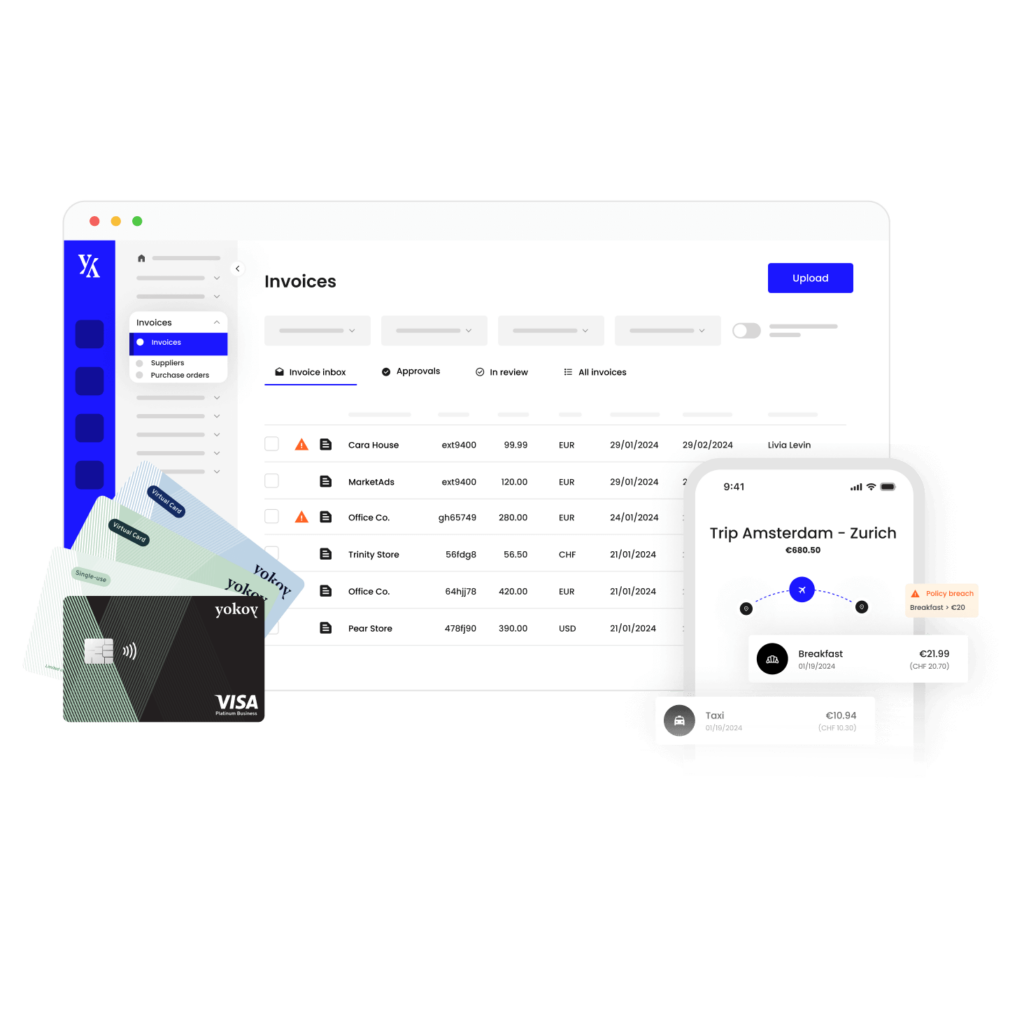Tail spend is a critical area in procurement that often remains in the shadows. This term encompasses the numerous unmanaged, high-volume, and low-value transactions that occur within an organization.
While it may represent a relatively small portion of your procurement spend, its impact on your bottom line is far from insignificant.
In this article, we take a closer look at the consequences of poorly managed tail spend, best practices for effectively managing business spend, and the role of AI and automation in this process.
What is tail spend?
Our discussion on tail spend cannot begin without going into detail about the Pareto Principle. Essentially, tail spend is based on the Pareto curve or 80/20 rule.
When applied to procurement, the rule states that 80% of the Total Spend is made with only 20% of the vendors. So the remaining 20% of the spend uses 80% of the vendors.
That 80% represents a significant number of transactions by a large number of vendors and creates a long unmanageable tail that keeps growing. The rule is handy for spend segmentation and helps sourcing professionals determine where to focus their attention.
Now, let’s define the term.
Tail spend encompasses the non-strategic, high-volume, low-value transactions, or infrequent purchases that an organization makes. These expenditures are often scattered across different departments, suppliers, and categories, making them challenging to track and manage effectively.
Tail spend typically includes small, one-off purchases and services that fall outside the core procurement processes.
Examples of tail spend
To better understand the diverse range of items, purchases, and transactions that fall within the tail spend category, here are some illustrative examples:
1. Petty cash
At the lowest tier of the tail spend hierarchy are day-to-day expenses necessary for an organization’s operations, often incurred outside the regular procurement process. Examples include:
- Lunches: Small meal expenses for employees.
- Taxis: Transportation costs.
- Fuel: Fueling up company vehicles.
- Miscellaneous on-the-job expenses.
2. E-marketplace spend
Slightly above petty cash spend is e-marketplace spend, characterized by standard, repeatable purchases that organizations make frequently. These transactions are typically considered low in material value and are not heavily negotiated. Examples encompass:
- Stationery: Office supplies like paper and pens.
- Batteries: Commonly used power sources.
- Power tools: Tools for maintenance and repair.
- Paper cups: Disposable cups for office use.
- Laptops: Standard computing equipment.
- Office furniture: Basic furniture items like desktop fans, tables, and chairs.
3. Custom catalogs
Custom catalog spend introduces complexity as it involves specific business requirements. In certain industries, such as manufacturing, custom catalogs may include unique items like specialized power tools. Not all companies have custom catalog spend, but when present, it can represent a substantial portion of procurement expenditures, sometimes up to 15%.
4. Tactical buys
Moving up the tail spend chain, we encounter tactical buys, which share similarities with spot buys. Tactical buys are characterized by purchases that are known only to the end-user. These items have been bought previously, and the vendor or vendor base is established. They differ from custom catalog spend due to lower purchase frequency, making a specialized procurement framework unnecessary.
Check out our newsletter
Don't miss out
Join 12’000+ finance professionals and get the latest insights on spend management and the transformation of finance directly in your inbox.
How do you analyze tail spend?
Analyzing tail spend is crucial for gaining control and optimizing these expenses. Here’s how you can do it.
1. Data aggregation
Tail spend is a broad category. To manage it effectively, start by collecting data from various sources within your organization, including procurement, accounts payable, and expense reports. This helps create a comprehensive view of tail spend.
2. Categorization
Tail spend can vary, so establish a clear definition specific to your organization. Categorize tail spend items to identify common themes. This helps in understanding where most of the non-strategic spending occurs.
For example:
- Hidden tail: The largest suppliers, often with existing contracts but hidden spending.
- Head of the tail: Spend between $50,000 to $1 million per year, not strategically managed.
- Middle of the tail: Purchases from various suppliers ranging from $2,000 to $200,000 per supplier.
- Tail of the tail: Suppliers with less than $2,000 spend, highly fragmented and transactional.
3. Supplier analysis
Examine the suppliers contributing to your tail spend. Determine if there are preferred vendors who can be used to consolidate purchases.
4. Spend control analysis
Evaluate your existing spend control measures and identify gaps in managing tail spend. Ensure most purchases are handled strategically. Use KPI metrics to track progress, including cost reduction, transaction costs, and spend visibility.
The ultimate goal is to save money for the organization, and all these steps support this objective.
What are the main challenges of tail spend management?
Tail spend management presents several challenges, which often revolve around the lack of visibility, control, and fragmented processes.
Lack of spend data visibility
One of the significant challenges in dealing with tail spend is the limited visibility into these smaller transactions. When these purchases are not tracked or recorded properly, it becomes challenging to analyze, control, or optimize them. This lack of data can hinder cost-saving opportunities.
Lack of spend control
In many organizations, tail spend remains uncontrolled, resulting in excessive or unnecessary costs. Without adequate control measures in place, it’s challenging to enforce compliance with procurement policies and supplier contracts, which can lead to inefficient spending.
Fragmented spend management processes
The decentralized nature of tail spend often means that different departments or individuals are responsible for these purchases. This fragmented approach makes it difficult to enforce standard procurement procedures, negotiate better deals with suppliers, and consolidate purchases for cost savings.
Blog article
From $456K Lost/Year, to Full Spend Control: Three Process Changes You Can Implement Today
In the current economic context, with inflation peaking and recession looming, finance departments are under pressure to control costs and cut unnecessary spending. The fastest way to do this is to identify hidden costs – a task proves to be more challenging than it should.

Thomas Inhelder,
CFO at Yokoy
How spend management software helps reduce tail spend
Spend management software plays a pivotal role in reducing tail spend by streamlining processes, enhancing visibility, and promoting cost-effective procurement practices. Here’s how it accomplishes this:
1. Enhanced visibility
- Data aggregation: Spend management software collects data from various sources, providing a comprehensive view of all expenses, including tail spend items.
- Real-time monitoring: It offers real-time tracking of tail spend transactions, making it easier to identify irregular or off-contract purchases.
- Categorization: The software categorizes tail spend items, helping procurement teams understand where non-strategic spending occurs.
2. Automated spend analysis
- Spend segmentation: Spend management software automates the process of categorizing and segmenting tail spend commodities, allowing for more targeted analysis.
- Spend classification: It classifies tail spend into different segments, such as hidden tail, head of the tail, middle of the tail, and tail of the tail, based on transaction value and supplier relationships.
3. Improved control
- Policy enforcement: Spend management software enforces procurement policies, ensuring that all purchases align with the organization’s guidelines.
- Approval workflows: It streamlines approval processes, reducing the likelihood of unauthorized or maverick spending.
- Contract compliance: The software monitors compliance with vendor contracts, alerting procurement teams to any deviations.
Case study
How Buhler Turbocharged their Spend Management with Yokoy
Buhler needed a digital solution to streamline their spend management process across global entities. With Yokoy, they achieved 4.7x ROI, processing 46.7% of their expenses within 24 hours.
4. Supplier collaboration
- Negotiation and consolidation: Spend management software aids in supplier negotiations and strategic sourcing by consolidating tail spend purchases and helping finance teams identify cost saving opportunities.
- Preferred vendor selection: It allows organizations to select preferred vendors for various tail spend categories, reducing supplier fragmentation and decreasing the total number of suppliers.
5. Cost reduction
- Cost avoidance: By automating spend analysis and monitoring, spend management software helps in avoiding unnecessary or excessive expenses.
- Bulk negotiations: The software identifies opportunities for bulk negotiations or volume discounts, further reducing costs.
- Strategic transformation: It assists in moving tail spend items into strategically managed spend, where cost control and efficient procurement practices are standard.
6. Compliance and reporting
- Regulatory compliance: Spend management software ensures that tail spend transactions adhere to regulatory standards, reducing the risk of non-compliance.
- Detailed reporting: It provides detailed reports on tail spend performance, helping organizations track cost reduction, transaction costs, and spend visibility.
In conclusion, spend management software is a valuable asset in tail spend reduction. By enhancing visibility, automating analysis, enforcing policies, and promoting supplier collaboration, it empowers organizations to streamline procurement processes and achieve cost savings in their tail spend management efforts.
If you’d like to see Yokoy’s spend management solution in practice, you can book a demo below.
See Yokoy in action
Bring your expenses, supplier invoices, and corporate card payments into one fully integrated platform, powered by AI technology.
